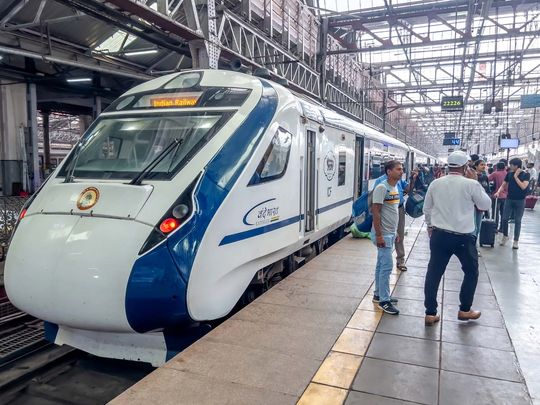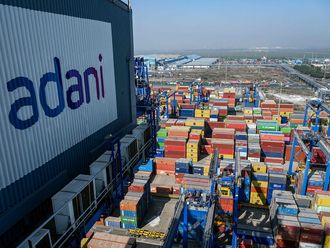
It has been several decades delayed, but India’s moment may be arriving soon as it strives to become the world’s third-largest economy. Though India was a thriving global economy a millennium ago, its success drew colonisers who exploited the country for its riches until its political independence in 1947.
India’s economic independence is still a work in progress. The post-1947 economic journey of India can be broadly defined into three phases. The first phase was from 1947 to 1991, India had a command and control economy where the government dictated business decisions to licensed industrialists. This was also the phase when the foundation of industrial economy was laid mostly by government-run companies.
The second phase began with the delicensing of industry from 1992 onwards, leading to a series of reforms which brought in FDI in a phased manner. This phase enhanced private investment in diverse sectors like pharmaceuticals, insurance, automobile and retail. Infrastructure was improved but the investments were not commensurate with the needs of the economy. Roads and airports were opened to private sector while the telecom sector blossomed.
Pranjal Sharma, economic analyst based in India
The third phase began from 2014 onwards, when India embraced the fourth industrial revolution and its suite of technologies. Foundational reforms were implemented that improved tax administration and significantly reduced the debt crisis in banking. The launch of Goods and Services Tax made India a single tax market in most products, triggering a huge shift in business practices while boosting national revenue. The Insolvency and Banking Code (IBC) gave teeth to creditors who could unseat promoters who had willfully defaulted on credit. As a consequence, gross and net non-performing assets (NPA) ratios have fallen from a high of 11.5 per cent and 6.1 per cent in March 2018 to 3.9 per cent and 1.0 per cent in March 2023 respectively.
The debilitating presence of crony capitalism was severely dented after bankers and promoters were held accountable under the IBC laws.
India is now the fastest growing large economy of the world. A decade of political stability and deepening economic reforms has propelled India to a position of strength. From being among the fragile five economies in 2014, India is among the top five economies of the world. US, China, Germany and Japan are still bigger, though the third slot is not too far away for India.
Quoting S&P Global Ratings, Reuters reported that India will remain the fastest-growing major economy for at least the next three years, setting it on course to become the world’s third-largest economy by 2030.
S&P expects India, currently the world’s fifth-largest economy, to grow at 6.4 per cent this fiscal and estimates growth will pick up to 7 per cent by fiscal 2027. In contrast, it expects China’s growth to slow to 4.6 per cent by 2026 from an estimated 5.4 per cent this year. “A paramount test will be whether India can become the next big global manufacturing hub, an immense opportunity,” S&P said in its Global Credit Outlook 2024 report, dated December 4.
In the current phase of growth, India’s rise to the third spot will be fuelled by digital technologies. Across sectors, digital technologies are allowing India to leapfrog ahead with innovative new policies.
Technology for informed policymaking
The notable success of the India Stack over the years has given India a prominent and well-deserved status as the hub of social and technological innovation. India Stack, also known as the Digital Public Infrastructure (DPI) is a collection of open Application Programming Interfaces (APIs) that has been aiming to make identity, data, and payments easy and viable for all while transforming the core dynamics of governance in the country. Several countries have signed up with the government of India in a bid to replicate the model in their own countries. Coupled with the India Stack the government of India is also offering a series of other platforms such as UPI, Modular Open Source Identity Platform (MOSIP), CoWIN as well as the Digital Health Stack , while many countries have shown interest in the Digital Infrastructure for Knowledge Sharing (DIKSHA) and National Digital Education Architecture (NDEAR) .
The journey of digital governance in India began way back in 2009 with the Aadhaar digital identity. It has ever since consistently added services and witnessed great success, such as in the case of Co-WIN, among others. According to a paper from the Bank for International Settlements, digital initiatives in India have helped the country achieve 80 per cent financial inclusion in just six years, which otherwise may have taken upto 47 years. The key layers of the India stack include a presence-less layer, a paperless layer, a faceless layer, and a consent layer. The consent layer is the final layer ensuring Data Empowerment and Protection Architecture (DEPA). It represents India’s attempt at creating ‘a secure consent-based data sharing framework’ to accelerate the financial inclusion of its citizens. It primarily gives the Indian citizens a series of rights to their data.
The Government of India has been progressively digitising its interface with citizens and making it easier to get licenses, certificates, payment of taxes and bringing efficiency in governance outcomes. The transformation is allowing the government to not just streamline administrative processes but also share information more readily, and involve citizens in decision-making. These services are not just restricted to digital identity and financial inclusion anymore; they now extend to various significant sectors such as health, education, and sustainability. Furthermore, the Champions of Change (COC) Dashboard, by NITI Aayog under the Aspirational Districts Program (ADP), monitors and tracks key development indicators across 5 sectors every month. These include education, health & nutrition, infrastructure, agri and water resources, and financial inclusion.
Recent initiatives in digital policymaking
One of the recent major achievements is the digitalisation of procurement of goods and services. Done by creating a centrally managed marketplace - Government eMarketplace (GeM), is now one of the largest procurement platforms with an annual gross merchandise value of $14.2b. Other key initiatives include the following:
• Aviation: DigiYatra is a paperless and contactless service entry at airports allowing passengers to travel without a boarding pass. DigiYatra uses a facial recognition system (FRS) to verify the identity of passengers linked to their boarding passes.
• Education: For digital education in India PM E-Vidhya is targeting almost 25 crore school students across the country and DIKSHA is working towards the dream of ‘One Nation, One Digital Platform. Other initiatives include; VidyDaan, E-Pathshala and Swayam Prabha TV.
• Healthcare: Ayushman Bharat Health Account, a building block of Ayushman Bharat Digital Health Mission (ABDM), is a 14-digit unique identification number that identifies you as a participant in India’s digital healthcare ecosystem.
• Railways and infrastructure: The PM Gati Shakti aims to reduce the logistics costs in India by providing seamless transportation of goods and people in the country. It is expected to cut the cost of logistics to GDP to 8 per cent from 14 per cent, while leveraging technology for intelligent wagons and freight trains, digital automatic couplers as well as digital twinning of infrastructure.
• Agriculture: According to Frost and Sullivan, drone adoption in India’s agriculture sector would rise at a CAGR of 38.5 per cent and reach $121.43 million by 2030, accounting for 2 per cent of all expenditures on agricultural machinery. With drone technology in the agriculture sector, farmers can bring high levels of efficiency in managing their crops and improve their yields. Although there are challenges such as concerns about job loss and a lack of knowledge and training, there are also initiatives to support to farmers and promote the use of this technology.
• Manufacturing: To enhance India’s manufacturing capabilities and exports, the Production Linked Incentive (PLI) Schemes for 14 key sectors were announced with an outlay of Rs. 1.97 lakh crore (over $26 billion). The goal is to attract investments in key sectors and cutting-edge technology to ensure efficiency and make Indian manufacturers globally competitive by inducing economies of size and scale in the manufacturing sector.
In addition to its efforts in various key sectors, The Swachh Bharat Mission (SBM) in India, has integrated technology as a crucial foundation to realise its ambitious goal of ensuring cleanliness and sanitation nationwide. According to PIB India, the Swachh Bharat Mission-Urban 2.0 places a strong emphasis on attaining Garbage Free Cities within the next five years. The initiative encompasses several aspects of waste management, including addressing legacy dumpsites, handling construction and demolition waste efficiently, and managing plastic waste effectively. Technologies like the Swachhata App and the integration of SBM toilets on Google Maps have played a pivotal role in the success of Swachh Bharat Mission-Urban.
The rapid evolution of technology has significantly transformed the governance landscape, offering unprecedented possibilities to improve efficiency, transparency, and accountability. Emerging technologies such as artificial intelligence, blockchain, and big data analytics are revolutionising governance by offering tools for predictive analysis, secure data management, and real-time decision support. These advancements play a critical role in fostering more informed policy-making and delivering responsive public services.
Real economic independence
Despite many initiatives, India still has a long way to go in boosting its manufacturing capabilities in various sectors including electronics, hardware and defence. Investments in shipping and ports needs more effort. The education sector needs more schools and colleges while healthcare needs more doctors and hospital beds. While technology will bridge the gaps, basic investments will still be needed. The initial results of the production linked incentive schemes have allowed global companies like Apple Inc to begin manufacturing iPhones in India. Other advanced sectors like drones are growing.
As India improves its capabilities in such key sectors, its path to becoming the third largest economy will be smoother. ●
— The writer is an economic analyst based in India and author of The Next New: Navigating the Fifth Industrial Revolution














